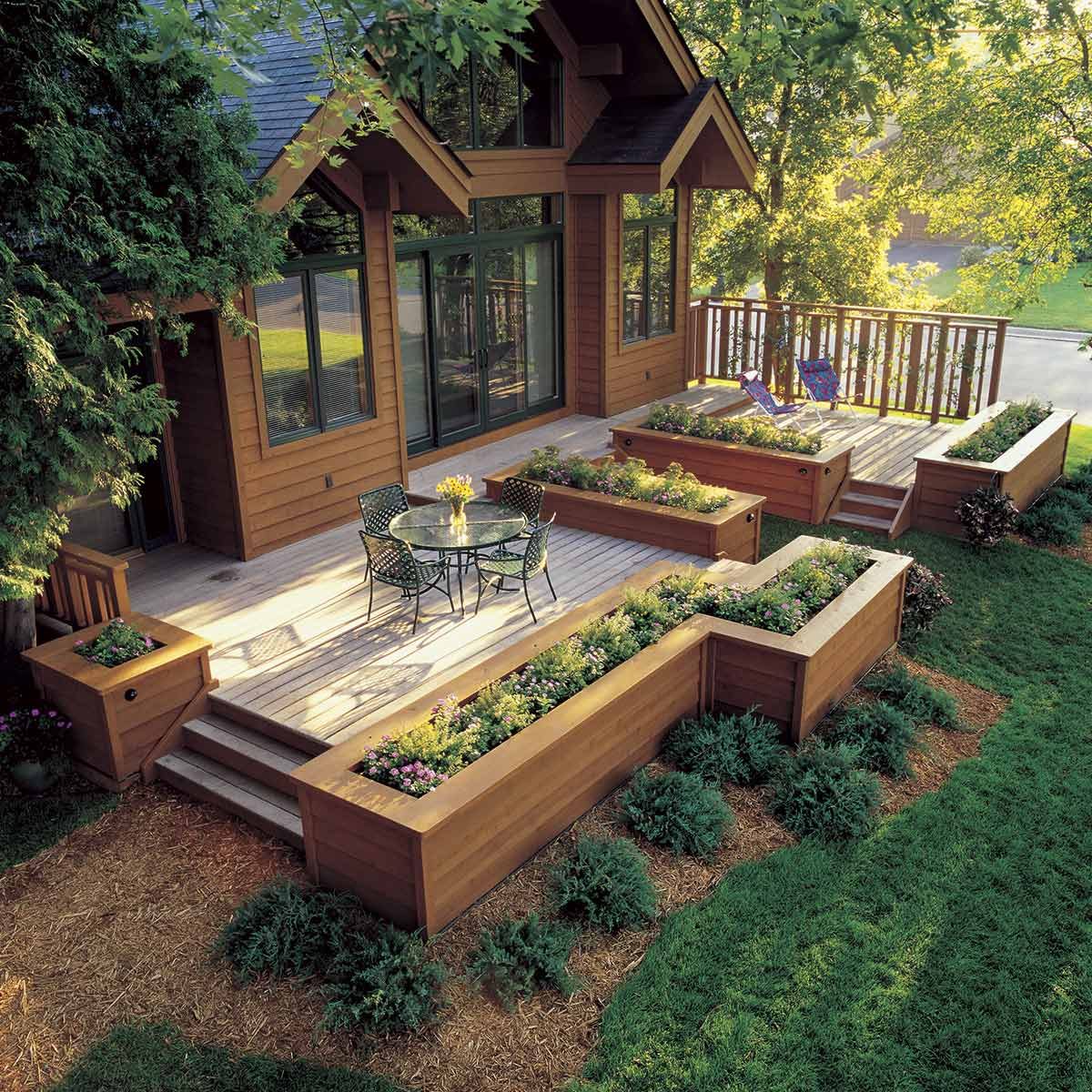Plants for around deck – Plants for around your deck can transform your outdoor space into a vibrant oasis, adding color, texture, and life to your deck. From sun-loving blooms to shade-tolerant greenery, there’s a wide range of plants that can thrive in the unique conditions around your deck. In this comprehensive guide, we’ll explore the factors to consider when selecting plants, popular plant choices, and expert tips for planting and care, empowering you to create a stunning deck landscape that will delight your senses and enhance your outdoor living experience.
Deck Design Considerations: Plants For Around Deck

When selecting plants for around a deck, it’s crucial to consider factors like sun exposure, soil conditions, and available space. Sun-loving plants like daisies and sunflowers thrive in full sun, while shade-tolerant varieties such as hostas and ferns prefer areas with less direct sunlight.
Soil conditions also play a role. Well-drained soil is essential for most plants, as poor drainage can lead to root rot. Consider amending the soil with organic matter to improve drainage and fertility.
Available space is another important consideration. Larger plants, such as shrubs and small trees, can create a dramatic effect but require more room. Smaller plants, such as groundcovers and perennials, are ideal for smaller spaces or as accents around larger plants.
Plant Size and Shape
The size and shape of plants should complement the deck’s design and overall aesthetic. Tall, narrow plants can add height and interest to a deck, while low-growing plants can create a lush, inviting atmosphere. Consider the mature size of plants when selecting them to ensure they don’t outgrow their designated space.
Popular Plant Choices

When selecting plants for around decks, consider factors such as the amount of sunlight the area receives, the size of the deck, and the desired aesthetic. Some popular choices include:
Benefits of Plants Around Decks:
- Provide shade and reduce heat absorption
- Attract wildlife, such as birds and butterflies
- Enhance privacy by creating a natural screen
- Improve air quality by absorbing pollutants
Table of Popular Plants
The following table compares the characteristics of some popular plants for around decks:
| Plant Name | Size | Sunlight Requirements | Special Features |
|---|---|---|---|
| Hydrangea | 3-6 feet tall and wide | Partial shade to full shade | Blooms in summer with large, showy flower heads in shades of pink, blue, or purple |
| Hosta | 1-3 feet tall and wide | Partial shade to full shade | Foliage comes in a variety of colors and patterns, including green, variegated, and blue |
| Knock Out Rose | 3-4 feet tall and wide | Full sun to partial shade | Blooms repeatedly throughout the summer with clusters of red, pink, or white flowers |
| Japanese Maple | 10-20 feet tall and wide | Partial shade to full shade | Deciduous tree with attractive foliage that turns vibrant shades of red, orange, and yellow in fall |
Planting and Care

Establishing and maintaining a thriving deck garden requires proper planting techniques and ongoing care. By following these guidelines, you can ensure the health and beauty of your plants throughout the seasons.
Prior to planting, prepare the soil by enriching it with organic matter such as compost or peat moss. This improves drainage and provides essential nutrients for plant growth.
Planting, Plants for around deck
- Dig a hole twice the width of the root ball and just as deep.
- Loosen the roots of the plant and place it in the hole, ensuring the top of the root ball is level with the ground.
- Backfill the hole with soil, gently firming it around the plant.
- Water thoroughly to settle the soil and remove any air pockets.
Spacing
When planting around a deck, consider the mature size of the plants and space them accordingly. Proper spacing allows for adequate air circulation, reduces competition for resources, and prevents overcrowding.
Watering
Regular watering is crucial for plant health. The frequency and amount of water required depend on factors such as plant species, soil conditions, and weather. As a general rule, water deeply and less frequently, allowing the soil to dry out slightly between waterings.
Pests and Diseases
Common pests that may affect deck plants include aphids, spider mites, and whiteflies. These pests can be controlled through organic methods such as insecticidal soap or neem oil. Diseases like powdery mildew and black spot can be managed by ensuring proper air circulation, avoiding overwatering, and using fungicides if necessary.
Tips for Maintaining Deck Plants
- Fertilize regularly with a balanced fertilizer to provide essential nutrients.
- Mulch around plants to retain moisture, suppress weeds, and regulate soil temperature.
- Deadhead spent blooms to encourage new growth and flowering.
- Prune plants as needed to maintain their shape and remove any diseased or damaged foliage.
- Protect plants from extreme weather conditions, such as frost or drought, by providing shade or shelter as necessary.
